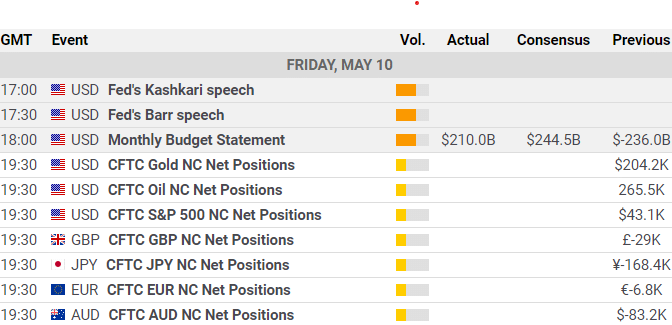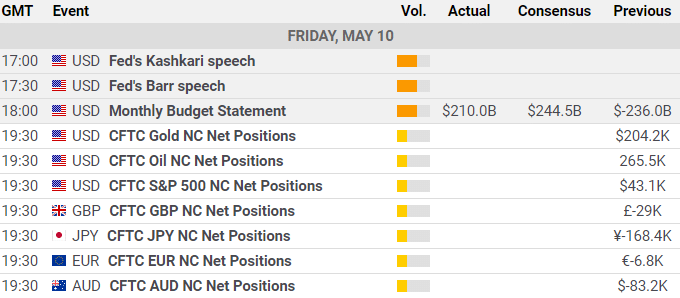EUR/USD Faces Renewed Selling Pressure Amid Market Uncertainty
The EUR/USD pair has recently faced significant selling pressure, bringing it near the 1.0760 level. This downward movement was largely due to the sudden strength of the Greenback. As the US dollar regained strength, EUR/USD was dragged to daily lows. This performance has highlighted the ongoing uncertainty in the currency markets.
Key Resistance Levels for EUR/USD
On the upside, EUR/USD faces several key resistance levels. The first notable resistance is at the May high of 1.0812. This level is followed by the intermediate 100-day Simple Moving Average (SMA) at 1.0829. Beyond this, the April top of 1.0885 presents another hurdle. If EUR/USD manages to surpass these levels, the March peak of 1.0981 comes into play. Further resistance is seen at the weekly high of 1.0998, recorded in January. The psychological threshold of 1.1000 remains a significant barrier.

Key Support Levels for EUR/USD
On the downside, EUR/USD has several important support levels to watch. A break of the 2024 bottom at 1.0601 could lead to a test of the November 2023 low at 1.0516. If this zone is breached, EUR/USD may target the weekly low of 1.0495 from October 2023. Further support is found at the 2023 low of 1.0448, with the round level of 1.0400 acting as a final line of defense.
The Impact of the Federal Reserve on EUR/USD
The Federal Reserve plays a crucial role in shaping the performance of EUR/USD. The recent statements from various Federal Reserve officials have influenced market sentiment. On Thursday, San Francisco Fed President Mary Daly commented on the need for continued policy restrictiveness. She noted the potential need for additional time to bring inflation down to the Fed’s target level. This cautious approach has added to the selling pressure on EUR/USD.
Market Sentiment Ahead of Key Events
Market sentiment remains cautious as traders await key economic indicators. The upcoming flash Michigan Consumer Sentiment report for May is highly anticipated. Additionally, speeches by several Federal Reserve officials, including Michelle Bowman, Austan Goolsbee, and Michael Barr, are expected to provide further insights into monetary policy.
Monetary Policy Divergence and Its Impact
The monetary policy divergence between the Federal Reserve and other G10 central banks continues to dominate the macroeconomic landscape. This divergence has created significant volatility in the FX markets. The Greenback’s strength, driven by expectations of higher interest rates, contrasts with more dovish stances from other central banks. This divergence has been a key factor in the recent performance of EUR/USD.
The Role of the Greenback in EUR/USD Performance
The Greenback’s recent strength has played a significant role in the selling pressure on EUR/USD. As the US dollar gains strength, EUR/USD tends to weaken. This inverse relationship is crucial for traders to understand. The Federal Reserve’s monetary policy decisions, particularly regarding interest rates, directly impact the Greenback’s value. Higher interest rates tend to strengthen the Greenback, adding pressure on EUR/USD.
Future Outlook for EUR/USD
Looking ahead, the future performance of EUR/USD will largely depend on several factors. The Federal Reserve’s monetary policy decisions will continue to play a pivotal role. Any indications of rate cuts or changes in the Fed’s approach could influence the Greenback and, consequently, EUR/USD. Additionally, geopolitical events and economic data releases will be closely watched by traders.
Geopolitical Risks and EUR/USD
Geopolitical risks can also impact EUR/USD. Political instability in the Eurozone or the United States can create uncertainty. This uncertainty often leads to fluctuations in the currency pair. For instance, elections, economic sanctions, and trade tensions can all influence market sentiment. Traders need to stay informed about these developments to navigate the market effectively.
Technical Analysis of EUR/USD
Technical analysis remains a valuable tool for traders. By examining historical price patterns and key levels, traders can make informed decisions. The current resistance and support levels provide important reference points. Monitoring these levels can help traders identify potential entry and exit points. Additionally, using indicators such as the Moving Average and Relative Strength Index can provide further insights.
The Importance of Economic Indicators
Economic indicators are crucial for understanding the performance of EUR/USD. Reports on employment, inflation, and consumer sentiment can all influence the currency pair. Traders should pay close attention to these reports to gauge market sentiment. For example, strong economic data from the United States can strengthen the Greenback, adding pressure on EUR/USD. Conversely, weak data can have the opposite effect.
GBP/USD Faces Renewed Pressure Amid Market Uncertainty
The GBP/USD currency pair has come under significant pressure recently, challenging the key 1.2500 level. This decline has been driven by a strong comeback of the US Dollar. Initially, GBP/USD edged higher to near 1.2540 during Asian trading hours, buoyed by better-than-expected UK Gross Domestic Product (GDP) data for the first quarter. However, the Pound Sterling (GBP) soon faced challenges, particularly following the Bank of England’s decision to maintain the interest rate at 5.25%.
Key Economic Data and Initial Gains
On Friday, GBP/USD showed some initial strength, reaching near 1.2540. This upward movement was supported by higher-than-expected UK GDP data. The GDP for the first quarter rose by 0.6% on a quarterly basis, reversing the previous quarter’s decline of 0.3%. This increase surpassed the expected growth rate of 0.4%. Moreover, the year-over-year GDP also increased by 0.2%, rebounding from a previous decline of 0.2%.

Despite this positive data, the Pound Sterling encountered significant challenges. The Bank of England’s (BoE) decision to keep the interest rate unchanged at 5.25% played a crucial role. During the post-decision press conference, BoE Governor Andrew Bailey mentioned the possibility of a rate cut next month. However, he emphasized the need to wait for additional data on inflation, economic activity, and the labor market before making a decision.
The Impact of the Bank of England’s Decision
The Bank of England’s stance on interest rates has had a considerable impact on GBP/USD. The decision to maintain the interest rate at 5.25% has raised the prospect of future rate cuts. This has put pressure on the British Pound, weakening the GBP/USD pair. Investors are now closely monitoring upcoming data releases to gauge the BoE’s next move.
Additionally, the recent data from the US Bureau of Labor Statistics (BLS) has influenced market sentiment. The number of individuals filing for unemployment benefits exceeded expectations, suggesting potential changes in the Federal Reserve’s (Fed) policy outlook. Initial jobless claims for the week ending May 3 rose to 231,000, surpassing estimates of 210,000 and showing an increase from the previous week’s 209,000.
US Economic Data and Its Implications
The rise in jobless claims indicates a potential shift towards a less hawkish policy by the Federal Reserve. This has resulted in pressure on US Treasury yields, which in turn has undermined the US Dollar. On Friday, the preliminary Michigan Consumer Sentiment Index is forecasted to show a slight decrease in May. This index evaluates sentiment among US consumers, covering personal finances, business conditions, and buying conditions.
The interplay between the Bank of England’s decisions and the US economic data creates a complex scenario for GBP/USD. The potential for a rate cut by the BoE, coupled with the Fed’s possible shift in policy, adds layers of uncertainty. Traders and investors must navigate these factors to understand the currency pair’s movements better.
Comparing Interest Rate Policies
The divergence in interest rate policies between the Bank of England and the Federal Reserve significantly impacts GBP/USD. While the BoE has maintained a steady interest rate, the possibility of future cuts looms. In contrast, the Fed’s approach has been influenced by rising jobless claims and broader economic indicators. This divergence creates a challenging environment for GBP/USD, as traders react to differing monetary policies.
The strength of the US Dollar, bolstered by the Fed’s policies, contrasts with the pressures facing the British Pound. As a result, GBP/USD remains sensitive to economic data releases and policy announcements. The currency pair’s future performance will hinge on how these factors evolve in the coming months.
The Role of Gross Domestic Product (GDP) Data
Gross Domestic Product (GDP) data plays a crucial role in shaping market sentiment around GBP/USD. The recent positive GDP figures from the UK provided a temporary boost to the British Pound. However, the sustainability of this growth remains uncertain, particularly in light of potential rate cuts by the Bank of England.
In the US, GDP data also influences the Federal Reserve’s policy decisions. Economic growth indicators help shape expectations around interest rate adjustments. As both central banks monitor GDP trends, their decisions will continue to impact GBP/USD. Traders should pay close attention to GDP reports from both economies to anticipate potential market movements.
Market Sentiment and Future Outlook
Market sentiment around GBP/USD is currently shaped by a mix of economic data and central bank policies. The Bank of England’s cautious approach to interest rates, combined with the Federal Reserve’s responses to economic indicators, creates a dynamic trading environment. Investors are particularly focused on upcoming data releases and policy statements from both central banks.
The future outlook for GBP/USD will depend on several key factors. Firstly, the Bank of England’s next move regarding interest rates will be critical. Any indication of a rate cut could further weaken the British Pound. Secondly, the Federal Reserve’s response to rising jobless claims and other economic data will influence the US Dollar’s strength.
Geopolitical Risks and Their Impact
Geopolitical risks also play a role in shaping GBP/USD. Political instability, trade tensions, and economic sanctions can create volatility in the currency pair. For instance, uncertainties surrounding Brexit negotiations or trade policies between the US and UK can impact market sentiment. Traders must stay informed about geopolitical developments to effectively navigate the market.
Technical Analysis of GBP/USD
Technical analysis provides valuable insights into GBP/USD’s performance. By examining historical price patterns and key support and resistance levels, traders can make informed decisions. The current resistance levels near 1.2540 and the support levels around 1.2500 are crucial reference points. Monitoring these levels can help traders identify potential entry and exit points.
Using technical indicators such as Moving Averages and the Relative Strength Index (RSI) can further enhance analysis. These tools help traders understand market trends and momentum. Incorporating technical analysis into trading strategies can improve decision-making and risk management.
The Importance of Economic Indicators
Economic indicators remain vital for understanding GBP/USD’s movements. Reports on employment, inflation, and consumer sentiment provide insights into economic conditions. Traders should closely monitor these indicators to gauge market sentiment. For example, strong employment data from the US can bolster the US Dollar, exerting pressure on GBP/USD.
Conversely, weak economic data can have the opposite effect, weakening the US Dollar and providing support for GBP/USD. By staying informed about key economic indicators, traders can anticipate potential market shifts and adjust their strategies accordingly.
Conclusion
In conclusion, both the EUR/USD and GBP/USD pairs continue to face significant pressure amid market uncertainty. The strength of the Greenback, driven by Federal Reserve policies and economic indicators, plays a crucial role for both currency pairs. Additionally, the monetary policy divergence between the Federal Reserve and other G10 central banks adds complexity, particularly for EUR/USD. For GBP/USD, the Bank of England’s interest rate decisions and the potential for future cuts further complicate the situation. By understanding these factors and closely monitoring key levels, traders can navigate both markets more effectively. The interplay between economic data, central bank policies, and geopolitical risks will continue to shape the performance of these currency pairs in the coming months.
Click here to read our latest article on Gold Market Trends

